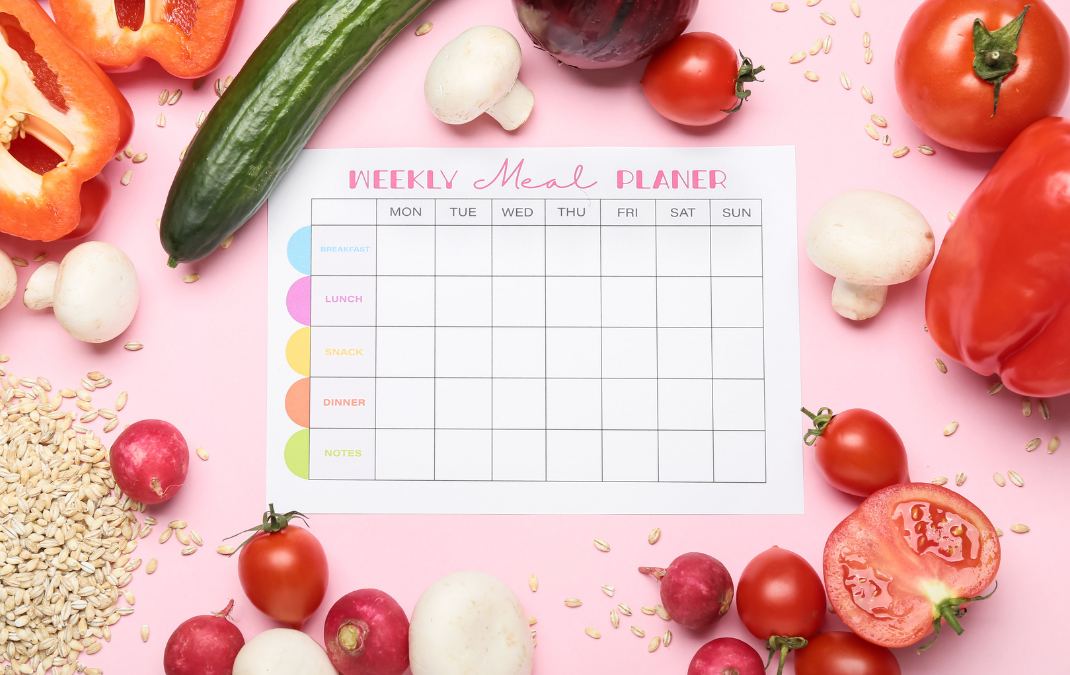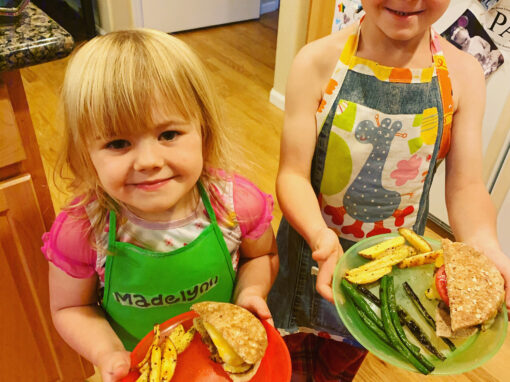My clients often ask what I eat and what I feed my family. Most of them know that I am big fan of meal planning. I am not referring to counting macros and putting all my meals in Tupperware, but planning 4-5 dinners per week to make dinnertime easier and less stressful.
Even when we seem to have an activity every night, my family still sits down to dinner together almost every night. It might be a mix and match of the four of us and we do not always eat at a consistent time but sitting down together even for a quick meal is a priority in our household. There is quite a bit of research emphasizing the benefits of family meals. One reason I can make family meals happen consistently is the small amount of time I put into meal planning. I even recently had a nutrition client tell me he had such a great week nutrition wise because he took a bit of time to get organized and figure out what his family was having for dinner throughout the week.
Late spring is a busy time for many with a million end of the year school activities, spring sports wrapping up, and the transition to summer. Even though I look forward to the lazier days of summer, I will continue to plan most of my family dinners. Planning even just a few dinners a week helps us eat well, saves money, reduces the stress of trying to figure out what to make each night and helps prioritize sitting down together to connect as a family.
Meal planning does not have to be complicated. I do not make extensive time-consuming meals every night. On the contrary, most of my weeknight meals take less than thirty minutes start to finish. Read below for a few of my top meal planning tips.

1. Set aside some designated time on Saturday and/or Sunday to plan your meals. This process should not take you hours and as you make it a habit, it can take as little as 20 minutes. I simply look through a few cookbooks or get inspiration online via Pinterest and pick at least 4 main dishes I want to make.
2. Don’t overcomplicate the process. I usually just plan my main dishes and then add a vegetable and starch. Though I love to cook and try new recipes, most of my side dishes are rotating favorites. My family’s favorite vegetable side dishes include roasted broccoli, cauliflower or carrots, salads, green beans, edamame and sautéed peppers and onions. Our favorite starches include baked fries, homemade bread, pasta, couscous, rice, and varieties of squash.
3. Look at your schedule for the week and plan accordingly. Have any evening activities? Plan something super quick that night. Heading to the pool for the afternoon and evening, plan a no cook main dish like a hearty salad and add a few other side dishes.
4. Make your grocery list but always be thinking ahead. Can one ingredient be used in two different meals? Can you double a recipe and freeze a portion to have another time?
5. Ask for input from others. I often ask each person in my household to pick a meal. This helps them be engaged in the process, be excited for ‘their pick’ and reduces the burden on me to come up with all the ideas. One caveat here is that if I ask for their input, I have to honor their request (exception being candy is not a valid main dish option). This week my daughter asked for chicken nuggets and fries. Therefore we will be making homemade chicken nuggets (simply dipped in panko) and baked fries. Remember many foods kids tend to love (pizza, nachos, tacos) can be made at home for a much less expensive and healthier version.
6. Be flexible. Forgot to thaw the chicken? Didn’t have all the ingredients? Got home later than expected? Don’t be so rigid with your meal planning that you cannot be flexible when life happens. Swap the planned meal for another night. All else fails you can have scrambled eggs or quesadillas for dinner.
7. Have a well-stocked pantry, freezer and fridge. Not everything goes according to plan and sometimes you must pivot. Keeping a well-stocked pantry and fridge and freezer lets you throw something together in a pinch. My pantry always includes beans, pasta, pasta sauce, rice, couscous. My freezer always has some type of quick main dish such as pre-cooked sausages, veggie burgers, frozen previous leftovers (soups, casseroles). My fridge always has eggs, cheese, veggies and fruit. In a bind, I can still through together a healthy meal.
If the thought of meal planning scares you, start small. Plan 2-3 dinners for the first few weeks. Once that has become a regular habit, plan 4-5 meals. Once you realize the time, money and stress you can save by spending a few minutes to get organized for the week, meal planning will become a regular welcomed habit. I would love to know your favorite family meals! Please share below!




